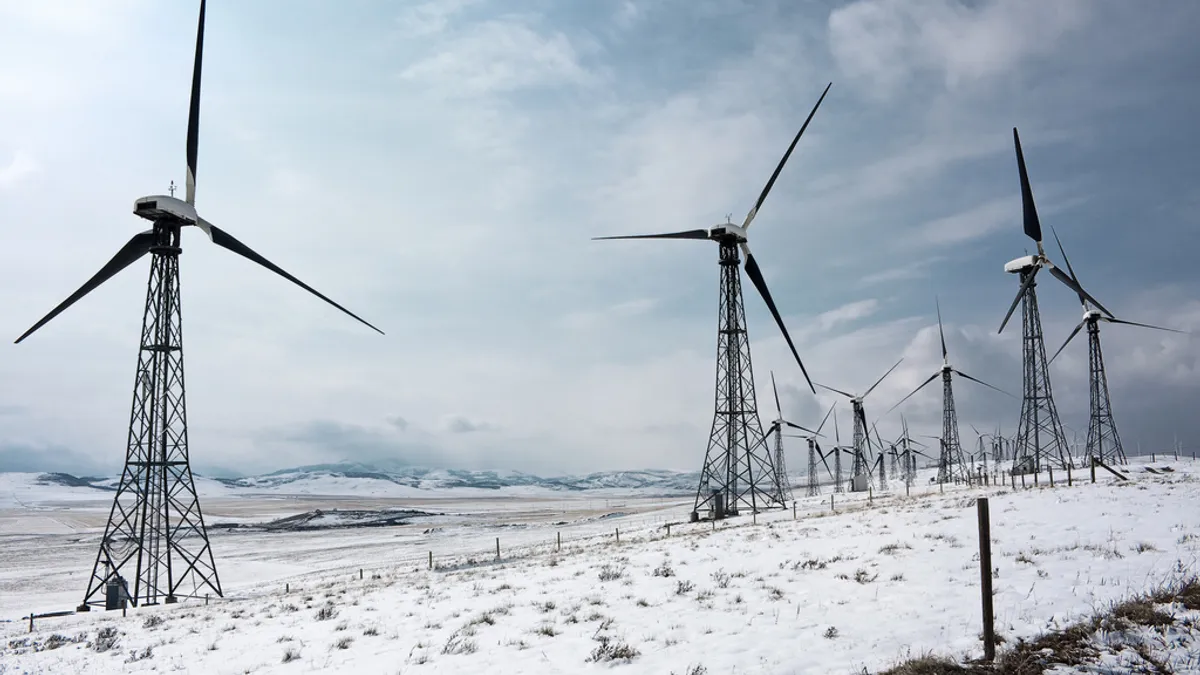Dive Brief:
- The Environmental Protection Agency's Clean Power Plan suggests that Minnesota, a state that the agency says needs to make deep emissions cuts, should look to reduce the carbon intensity of its generation fleet through efficiency and natural gas. But, as Midwest Energy News reports, a new report shows the state could potentially meet the emissions guidelines less expensively with a boost in renewables, especially wind.
- Renewables produced 21% of Minnesota’s electricity in 2014, up from 2008's 12%, according to Bloomberg New Energy Finance's 2015 state factsheet. Natural gas’s percentage of electricity generation grew from 2008's 5% to 13% in 2014. Coal’s share of electricity generation fell from 59% to 46% in the same period.
- Because Minnesota has a strong renewables mandate, the EPA's draft Clean Power Plan proposes the state get 64% of its 42% adjusted emission rate reduction by using natural gas to shift further away from coal, get 25% by increasing energy efficiency measures, and get 5% from nuclear energy.
Dive Insight:
Minnesota’s emission’s reduction target ranks tenth in the nation in severity of cuts, and it is not required to use the EPA recommendation of boosting natural gas to get to its emissions targets. It can also (1) substitute an absolute limit on its emissions mass for the adjusted emissions rate plan, (2) use a market-based mechanism like emissions trading, (3) pass the 40% renewables by 2030 mandate now before its legislature, or (4) develop a regional emissions reduction plan in partnership with neighboring states.
Bloomberg’s levelized cost of electricity (LCOE) analysis shows Minnesota’s unsubsidized wind is economically competitive with CCGTs using natural gas. Subsidized solar PV, small hydro, and CHP are cheaper than nuclear and almost cheaper than CCGTs using natural gas. Other renewables like waste-to-energy, hydro, and biomass could be competitive if subsidized.
CCGTs using natural gas become increasingly competitive as natural gas prices in the Northeast fall below the cost of Minnesota’s natural gas supply from Canada. Minnesota’s 1.5% per year energy efficiency standard can get to an economically achievable reduction of 7TWh per year by 2020.
Minnesota’s renewables mandate requires Xcel Energy to obtain 30% of its power from renewables by 2020 and the state’s other IOUs to get to a 25% share by 2025.













